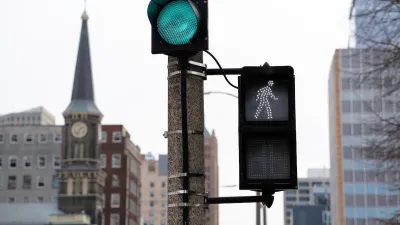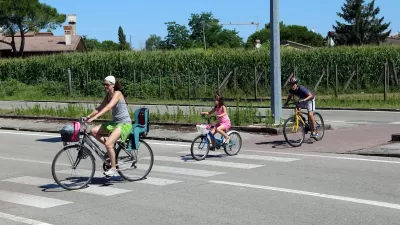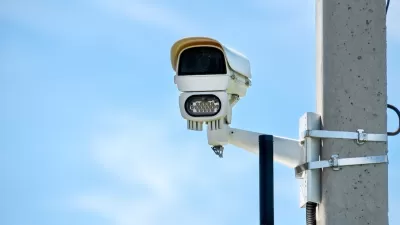A classic example of the notorious ‘stroad,’ aging state roads that aim to serve all users with piecemeal infrastructure solutions fail to facilitate safe, efficient transportation.

In a memorandum released in late July, the U.S. Department of Transportation (USDOT) highlighted the fact that states can take advantage of dozens of federal programs to improve “legacy” or “orphan” highways, reports Jeff Wood in Streetsblog USA.
These roads, built early in a city’s development, have been adjusted and augmented, often haphazardly, to meet the needs of increased traffic and new types of mobility. “That Frankenstein of a human-centered street and a car-centered, highway-style road is often referred to as a ‘stroad’ — and state highway agencies aren't big fans of them either, since all those pesky pedestrians and stoplights make legacy highways highly inefficient at moving cars.” In Washington state, for example, “the crash fatality rate on legacy highways is than three times higher than the rest of the roadway system.”
According to Wood, “states can already leverage 27 different federal programs in the Bipartisan Infrastructure Law to transform these roads with traffic calming measures, wider sidewalks, bike lanes and more. Twelve of those programs are ‘formula’ grants, which means a certain amount of money is guaranteed to each state based on a DOT calculation, and states don't even need to compete for the funds.”
FULL STORY: ‘Legacy Highways’ Are Some of Our Most-Dangerous Stroads — And It’s Time to Fix Them, US DOT Says

Study: Maui’s Plan to Convert Vacation Rentals to Long-Term Housing Could Cause Nearly $1 Billion Economic Loss
The plan would reduce visitor accommodation by 25,% resulting in 1,900 jobs lost.

North Texas Transit Leaders Tout Benefits of TOD for Growing Region
At a summit focused on transit-oriented development, policymakers discussed how North Texas’ expanded light rail system can serve as a tool for economic growth.

Why Should We Subsidize Public Transportation?
Many public transit agencies face financial stress due to rising costs, declining fare revenue, and declining subsidies. Transit advocates must provide a strong business case for increasing public transit funding.

How to Make US Trains Faster
Changes to boarding platforms and a switch to electric trains could improve U.S. passenger rail service without the added cost of high-speed rail.

Columbia’s Revitalized ‘Loop’ Is a Hub for Local Entrepreneurs
A focus on small businesses is helping a commercial corridor in Columbia, Missouri thrive.

Invasive Insect Threatens Minnesota’s Ash Forests
The Emerald Ash Borer is a rapidly spreading invasive pest threatening Minnesota’s ash trees, and homeowners are encouraged to plant diverse replacement species, avoid moving ash firewood, and monitor for signs of infestation.
Urban Design for Planners 1: Software Tools
This six-course series explores essential urban design concepts using open source software and equips planners with the tools they need to participate fully in the urban design process.
Planning for Universal Design
Learn the tools for implementing Universal Design in planning regulations.
City of Santa Clarita
Ascent Environmental
Institute for Housing and Urban Development Studies (IHS)
City of Grandview
Harvard GSD Executive Education
Toledo-Lucas County Plan Commissions
Salt Lake City
NYU Wagner Graduate School of Public Service





























